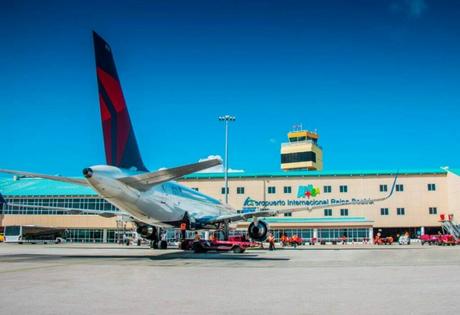Planning a tropical getaway? Look no further than Aruba and Puerto Rico, two captivating Caribbean destinations that offer distinct experiences for travelers seeking sun, sand, and vibrant culture.
Aruba, known as “One Happy Island,” charms visitors with its arid landscape, pristine white beaches, and a unique mix of cultural influences. On the other hand, Puerto Rico enchants with lush rainforests, breathtaking coastlines, and a rich tapestry of Taino, Spanish, and African heritage. Whether you’re yearning for a tranquil escape amidst desert-like wonders or an adventure in verdant rainforests, these destinations have you covered.
Join us as we dive into the geographical features, cultural diversity, economy, natural attractions, transportation options, and safety considerations of these two Caribbean gems. Get ready to plan your dream vacation and discover the wonders of Aruba and Puerto Rico.
Geographical LocationAruba is a small Dutch Caribbean island located in the southern Caribbean Sea, characterized by an arid landscape and desert-like terrain. It enjoys a dry climate and is outside the hurricane belt.Puerto Rico is situated in the northeastern Caribbean, offering lush rainforests, stunning coastlines, and mountainous terrain. It experiences a wetter climate due to its location within the hurricane belt.
Cultural DiversityAruba showcases a blend of cultural influences, including Dutch, Spanish, African, and South American. The island’s official languages are Dutch and Papiamento. Visitors can explore colorful neighborhoods, sample traditional cuisine, and participate in lively local festivals.Puerto Rico’s cultural heritage is a fusion of Taino indigenous roots, Spanish colonial influence, and African traditions. It is known for its vibrant salsa music and dance, historic architecture in Old San Juan, and colorful festivals that celebrate the island’s multicultural identity.
Economy and TourismAruba’s economy thrives on tourism and benefits from being an international financial center and oil refining industry. The island offers a variety of lodging options, attracting visitors with its beautiful beaches and friendly atmosphere.Puerto Rico’s economy is diverse, with tourism being a significant driver. It is also supported by sectors such as manufacturing, finance, and pharmaceuticals. The island’s historic sites, vibrant culture, and natural wonders contribute to its appeal as a tourist destination.
Natural AttractionsAruba boasts pristine white-sand beaches, crystal-clear turquoise waters, and a unique arid landscape. Arikok National Park showcases dramatic rock formations and hidden caves.Puerto Rico offers lush rainforests, including El Yunque National Forest, as well as bioluminescent bays that glow at night. The island’s diverse natural attractions provide opportunities for hiking, kayaking, snorkeling, and enjoying the beauty of the Caribbean.
Transportation and AccessibilityAruba offers excellent transportation infrastructure, including an international airport and a well-developed road network. Island-hopping opportunities are available due to its proximity to other Caribbean islands.Puerto Rico has good air connectivity through its international airport in San Juan. The island’s highway system facilitates travel between cities and attractions. Domestic flights and ferry rides are available for exploring nearby islands like Culebra and Vieques.
Safety and SecurityAruba is known for being one of the safest destinations in the Caribbean, with low crime rates and a focus on tourist safety.While Puerto Rico is a popular tourist destination, visitors should exercise caution and be mindful of safety concerns in certain areas. By taking common-sense precautions and staying in well-known tourist spots, visitors can have a safe and enjoyable experience on the island.
Size ComparisonAruba has a land area of approximately 180 square kilometers (70 square miles), making it significantly smaller than Puerto Rico.Puerto Rico has a land area of approximately 8,870 square kilometers (3,420 square miles), making it considerably larger than Aruba.
Geographical Location and Climate

A Desert Island Oasis in the Caribbean Aruba, known as “One Happy Island,” is a tiny gem situated in the southern Caribbean Sea. This Dutch Caribbean island boasts a unique geographical location that sets it apart from other destinations in the region. Unlike its lush counterparts, Aruba is characterized by its arid landscape, with a cactus-dotted desert in the interior.
The island’s location outside the hurricane belt ensures a year-round tropical paradise with minimal rainfall and plenty of sunshine. Whether you’re relaxing on the pristine white beaches or exploring the rugged Arikok National Park, Aruba’s distinctive geography and arid climate create an idyllic setting for a tranquil escape.
Where Lush Rainforests Meet the Crystal Blue Sea Nestled in the northeastern Caribbean, Puerto Rico offers a contrasting natural landscape to Aruba. Mountains, rain forests, and gorgeous coastlines combine to form the island’s alluring landscape. The El Yunque National Forest, a verdant paradise with cascading waterfalls and diverse wildlife, showcases Puerto Rico’s lush beauty.
The island’s geographical location within the hurricane belt means it experiences a wetter climate, especially during the rainy season. However, the abundant rainfall contributes to the thriving flora and fauna, making Puerto Rico a haven for nature enthusiasts seeking vibrant ecosystems and breathtaking scenery.
Cultural Diversity and Heritage

A Melting Pot of Cultures and Languages Aruba’s cultural tapestry reflects the diverse influences that have shaped its history. The island has been influenced by the indigenous Arawak people, Dutch colonization, and a blend of Spanish, African, and South American cultures.
Aruba’s official languages are Dutch and Papiamento, a Creole language infused with Spanish, Portuguese, Dutch, and African dialects. Visitors can immerse themselves in the island’s rich cultural heritage by exploring the colorful neighborhoods of Oranjestad, tasting traditional dishes like keshi yena (stuffed cheese), and participating in lively local festivals such as Carnival.
The Rich Tapestry of Taino, Spanish, and African Influences Puerto Rico’s cultural heritage is a vibrant mosaic born from a fusion of Taino indigenous roots, Spanish colonial influence, and the African traditions brought by enslaved people. The music, dance, and cuisine on the island reflect the island’s ethnic diversity.
Puerto Rico is renowned for its lively salsa music and dance, which originated from the blending of African and Latin rhythms. The historic Old San Juan with its Spanish colonial architecture, cobblestone streets, and impressive forts, offers a glimpse into Puerto Rico’s colonial past. The island’s festivals, such as the lively Vejigante Mask Festival and the Ponce Carnival, showcase the colorful blend of traditions and celebrate Puerto Rico’s multicultural heritage.
Economy and Tourism

Flourishing Tourism and a Thriving Economy Aruba’s economy thrives on tourism, attracting visitors from around the globe. The island is a well-liked vacation spot because to its beautiful beaches, pleasant atmosphere, and friendly population. The tourism sector in Aruba has grown throughout time, offering a variety of lodging options, from opulent resorts to inviting boutique hotels.
Beyond tourism, Aruba’s economy benefits from its status as an international financial center and its oil refining industry. The island’s strong economy and burgeoning tourism industry help to maintain a good quality of life for its citizens and provide both locals and foreigners with plenty of employment possibilities.
Tourism and Industry Coexist Puerto Rico’s economy is mostly driven by tourism, which is attracted by the island’s vibrant culture, historic sites, and spectacular natural wonders. With its UNESCO World Heritage Site, San Juan’s main city draws visitors looking for a mix of culture and a thriving nightlife.
Puerto Rico’s economy is broad and based in addition to tourism on sectors like manufacturing, finance, and pharmaceuticals. The island’s status as a U.S. territory offers advantages for businesses looking to invest, contributing to Puerto Rico’s economic growth and providing employment opportunities for its residents.
Natural Attractions and Outdoor Activities

Pristine Beaches and Arid Wonders Aruba’s natural beauty is characterized by its stunning beaches, crystal-clear turquoise waters, and unique desert-like terrain. Eagle Beach and Palm Beach are just a couple of the island’s famed picture-perfect white sand beaches that are wonderful for swimming, tanning, and other water sports.
Beyond the coastline, Aruba’s arid landscape invites exploration. Arikok National Park showcases dramatic rock formations, hidden caves, and towering cacti. Nature lovers can embark on hiking trails to discover hidden gems such as Natural Pool, a secluded natural swimming hole nestled amidst rugged cliffs.
A Nature Lover’s Paradise with Rainforests and Bioluminescent Bays Puerto Rico’s natural attractions captivate visitors with their diversity and allure. The sole tropical rainforest in the United States, El Yunque National Forest, is located on the island. National Forest System. Wander through lush trails, listen to the symphony of tropical birds, and take a refreshing dip in one of the cascading waterfalls.
For a unique experience, head to the bioluminescent bays, such as Mosquito Bay in Vieques, where microscopic organisms emit a captivating blue glow in the water at night. The natural delights of Puerto Rico provide countless chances for hiking, kayaking, snorkeling, and taking in the allure of the Caribbean.
Transportation and Accessibility

Seamless Travel and Island-Hopping Opportunities Aruba offers excellent transportation infrastructure, ensuring seamless travel for visitors. Queen Beatrix International Airport welcomes international flights from major cities, making it easily accessible for travelers. Getting around the island is convenient, with a well-developed road network and reliable public transportation options.
Renting a car allows flexibility and the opportunity to explore Aruba’s hidden gems at your own pace. Additionally, Aruba’s proximity to other Caribbean islands presents island-hopping possibilities for those seeking to expand their Caribbean adventure.
Convenient Connections and Cultural Exploration Puerto Rico boasts a central location with excellent air connectivity to various destinations. The primary entry point to the island is San Juan’s Luis Muoz Marn International Airport. Once in Puerto Rico, visitors can use a combination of taxis, rental automobiles, and public transit to tour the island’s various regions.
The well-connected highway system makes it easy to navigate between cities and attractions. From San Juan, visitors can also take domestic flights or ferry rides to explore the enchanting islands of Culebra and Vieques, known for their pristine beaches and untouched beauty.
Safety and Security

A Peaceful Haven with a Strong Focus on Safety Aruba is renowned for being one of the safest destinations in the Caribbean. The island takes pride in its low crime rates and welcoming atmosphere, which make it a great option for tourists looking for a relaxing and safe getaway.
Aruba’s dedication to safety is demonstrated by the existence of a trained and competent police force as well as a strong focus on safety precautions for tourists. Knowing that their safety is of the utmost importance, visitors can explore the island with confidence.
Navigating Safety Concerns with Care While Puerto Rico is a popular tourist destination, it is important to exercise caution and be mindful of safety concerns. Like any urban area, certain neighborhoods in San Juan may have higher crime rates. Visitors can have a safe and pleasurable time by using common sense precautions and staying in well-known tourist spots.
It is advisable to be aware of your surroundings, secure personal belongings, and consult local guidance regarding any specific safety concerns. With proper planning and vigilance, travelers can explore Puerto Rico’s wonders while prioritizing their safety.
FAQ

Where is Aruba compared to Puerto Rico?
In the southern Caribbean Sea, Aruba is situated around 1,200 kilometers (750 miles) west of Puerto Rico. It is part of the Lesser Antilles and is situated near the coast of Venezuela. Aruba is known for its unique geographical position, distinct from the nearby Greater Antilles islands like Puerto Rico.
Is Aruba bigger than Puerto Rico?
No, Aruba is smaller than Puerto Rico. One of the tiniest Caribbean islands, Aruba has a land area of roughly 180 square kilometers (70 square miles). IPuerto Rico, on the other hand, is a lot bigger, having a land area of roughly 8,870 square kilometers (3,420 square miles). Despite their size difference, both islands offer a wealth of natural beauty and cultural experiences for visitors to enjoy.
Is Aruba close to Puerto Rico?
Aruba is not considered close to Puerto Rico in terms of proximity. The two islands are separated by about 1,200 kilometers (750 miles) and are situated in various parts of the Caribbean. However, both islands are accessible via international flights, and there are options for island-hopping or combining visits to both destinations for travelers who wish to explore the diverse offerings of the Caribbean.

